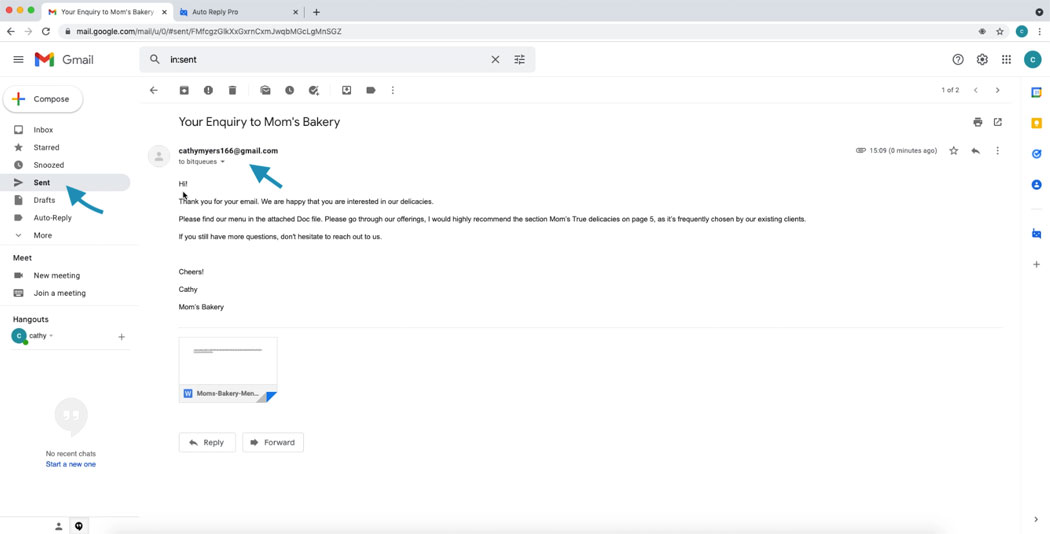Looking for a way to send Auto responses to email address mentioned in mail body content, like in case of form submissions or leads received in emails? Auto Reply Pro Add-on for Gmail allows you to extract email address from mail body content and send auto responses by setting just few simple rules. we just made life simpler and productive for Gmail and Gsuite users.
In the Tutorial below we will guide you about how to create and send Auto Responses in Gmail by extracting email address from the incoming mail messages body text content.
If you have not installed the Add on yet, then please Click here to install Auto Reply Pro Add-on from Google Marketplace
Need help with How to install the Add-on please click here to read installation tutorial.
a) To get started with setting up auto response rules click the Add / Manage Rules button to open the Auto Reply App in Browser.
b) If you’re logged into multiple Google Accounts in same browser. To access Auto Reply App, please Log out log in to the account as a primary account in which the Add-on is installed and you wish to use. Alternatively, you may Log in to this Account in incognito window / private window in Browser.
c) Please allow pop-ups for Gmail in Browser. Please read Step 2 about how to allow pop-ups in Gmail.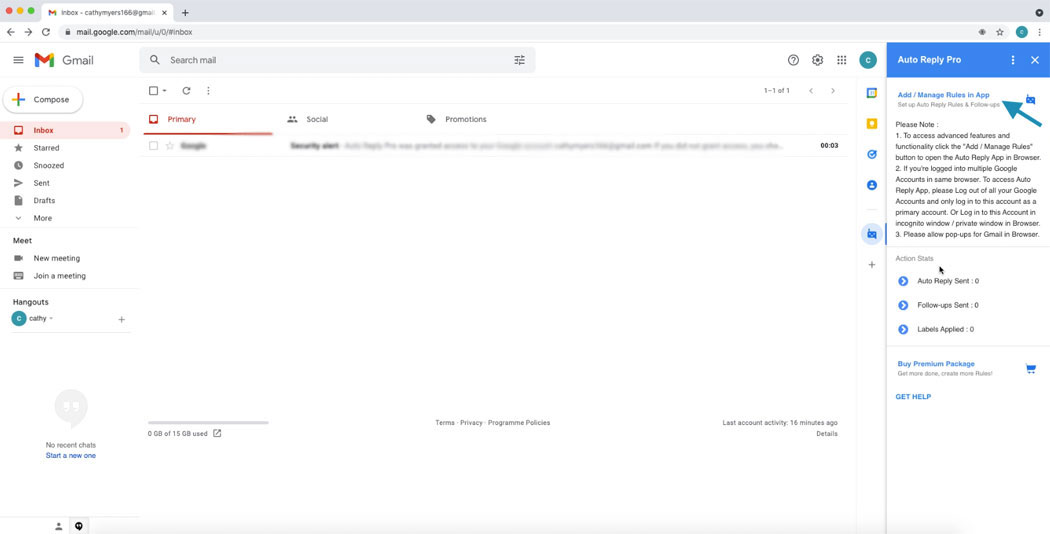
a) In case you notice a Pop up blocked notification, while trying to open dashboard from Gmail.
b) In the address bar, click Pop-up blocked see image below.
c) Click the link for the pop-up you want to see.
d) To always see pop-ups for the site, select Always allow pop-ups and redirects from [site] > Done.
Once you click the Add Auto Reply button, please type a name that helps identify this rules. Like in the below example we are planning to send Auto Response by extracting the email from the body content of incoming mail messages. So, we are giving this rule the name Rule-5-extract-email-message-body, it will help us recall in future what this rule is about. Click next to move to the next step Set Conditions.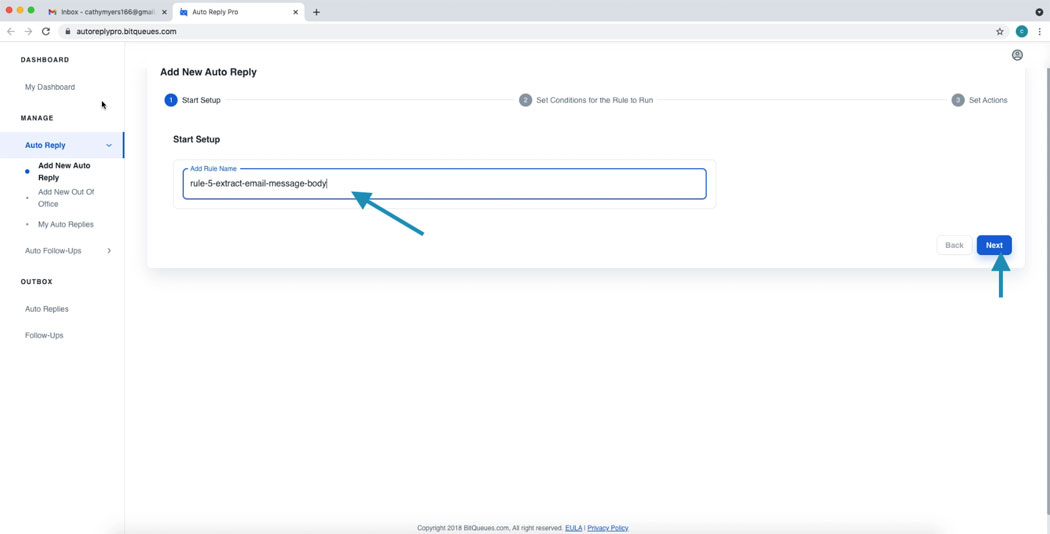
You can set multiple conditions which are listed in the section, you can create conditions based on the list or cover complex use cases by adding multiple conditions. Example, you can set if email contains words price, menu but should not be sent to email accounts belonging to specific domains (competitors) or specific email addresses.
However, here we are just adding the condition if the mail message contains words price, menu. We enter the word and click the Add button to add.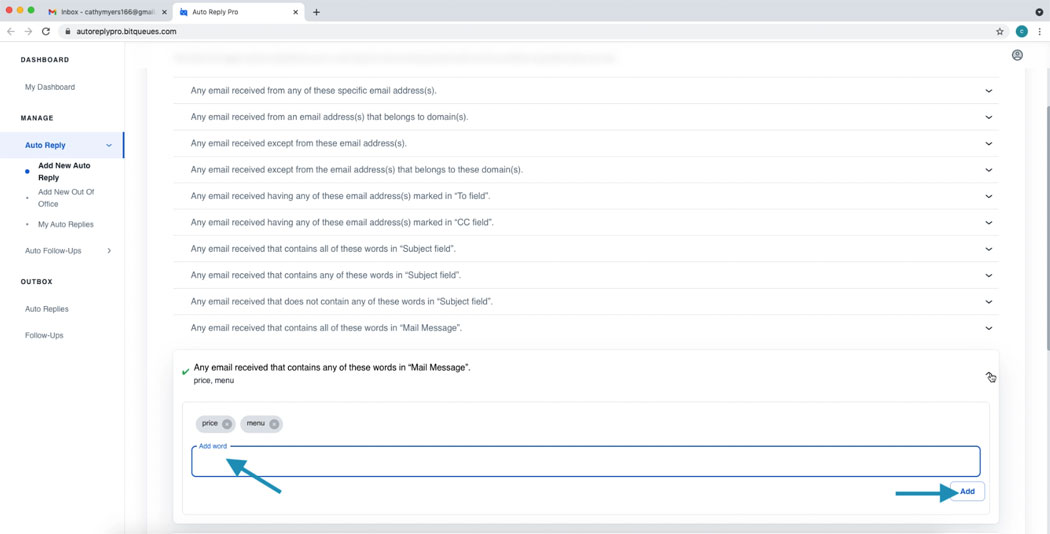
Worried for which all emails the Auto Response will be triggered for these conditions. No need to worry, just click the Test Rule Conditions button. It will show you a preview from last few weeks emails for which the Auto Response would have been sent. If all looks good proceed to next step of setting actions.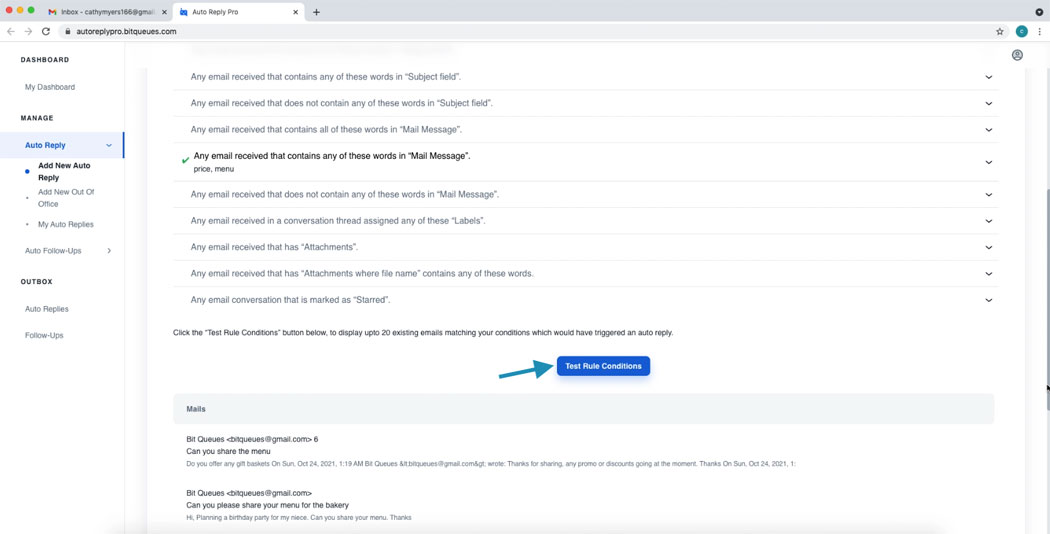
We get a choice on how the Auto Response will be sent, will it be Reply to incoming emails or a new email response will be created.
As we are setting up this auto response for form submissions, we are choosing Create & Send New Email as we don’t wish create a thread and share the details received in tabular format for form submissions. 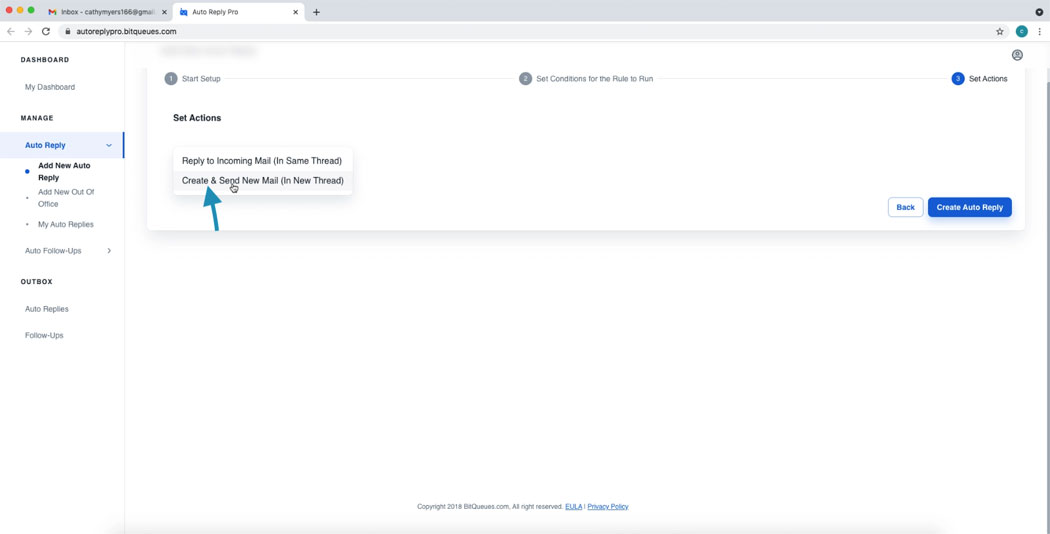
Now proceed to add the email content that you would like to be sent for incoming emails meeting your set criteria. 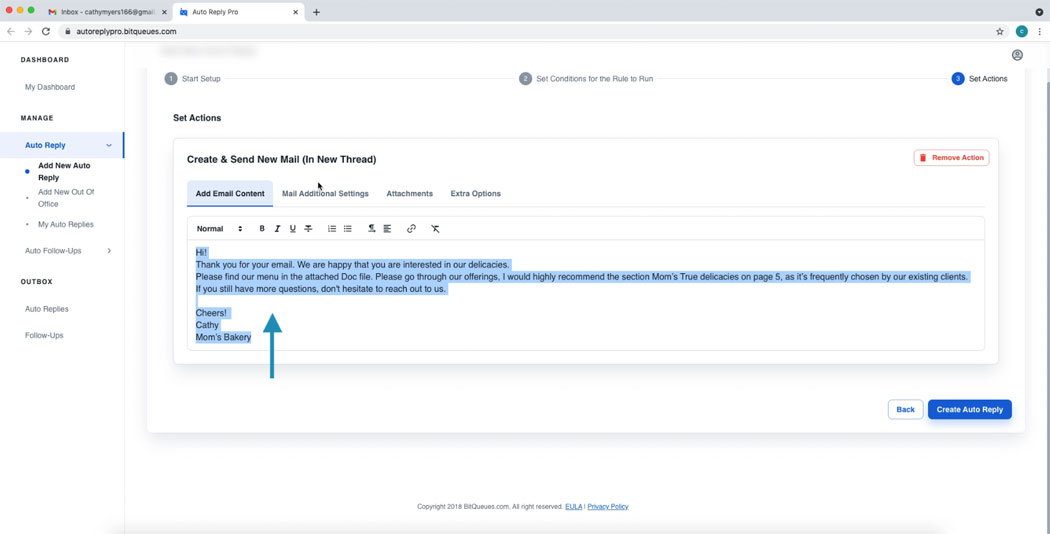
Please scroll down and look for option to Extract Email address from received mail content.
Now change the drop down from don’t extract to Extract Email address(s) & Add to recipients (To) list. (recommended)
Or configure to add the extracted email to Cc or Bcc field.
Note: Incase you are using a third party form submission service and also getting some unsubscribe email addresses listed in the mail body content. Please scroll below and add those email addresses to the remove specific email address or address belonging to specific domains in auto response settings fields below. This will ensure the Auto Response is only sent to the form submitter and not any other email address. 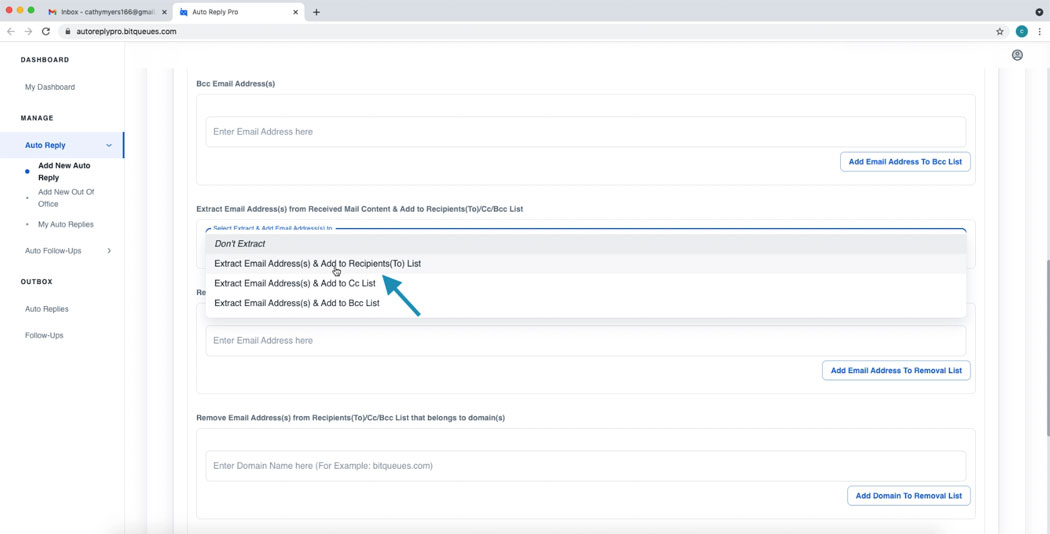
You also have a choice to specify custom subject in this case for the auto response email.
You can also add Additional recipients by adding their email address as To, Cc, Bcc field.
You also have an option to set custom Reply to email address for Outgoing email response.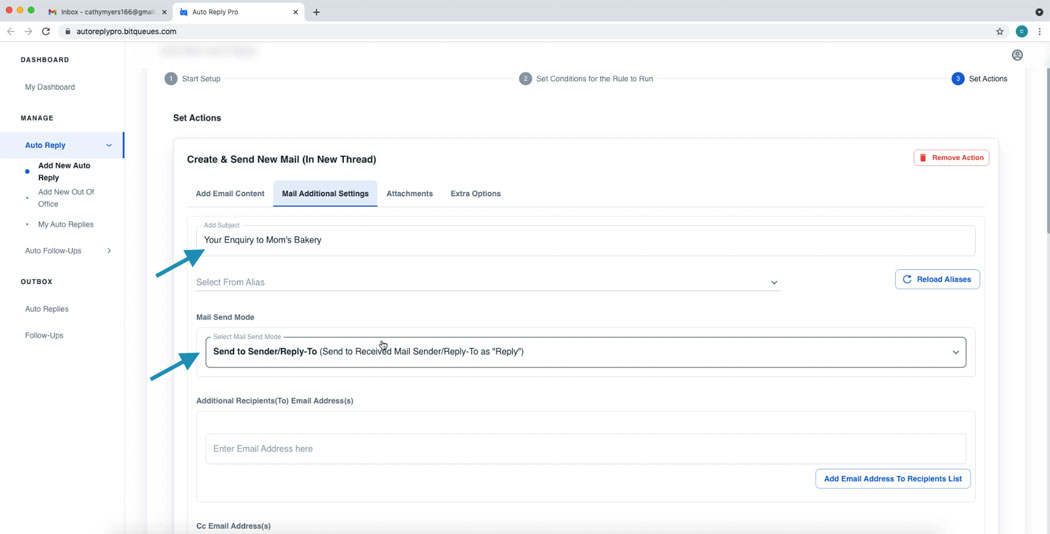
Auto Reply Pro allows you to add email attachments to your Auto Response Emails if required. Very helpful if you are looking to attach some Presentation, Brochure or Marketing materials along with your Email content.
– Attachments are Limited to max 10 files and overall size 10MB per email.
– All previously loaded attachments files are also available under your Attachment library, So, you don’t have to upload the attachments again and again.
In this tutorial we are choosing one of the files we already uploaded earlier from the attachments library. Now click Insert from Attachment Library button and choose the file to attach from the list. 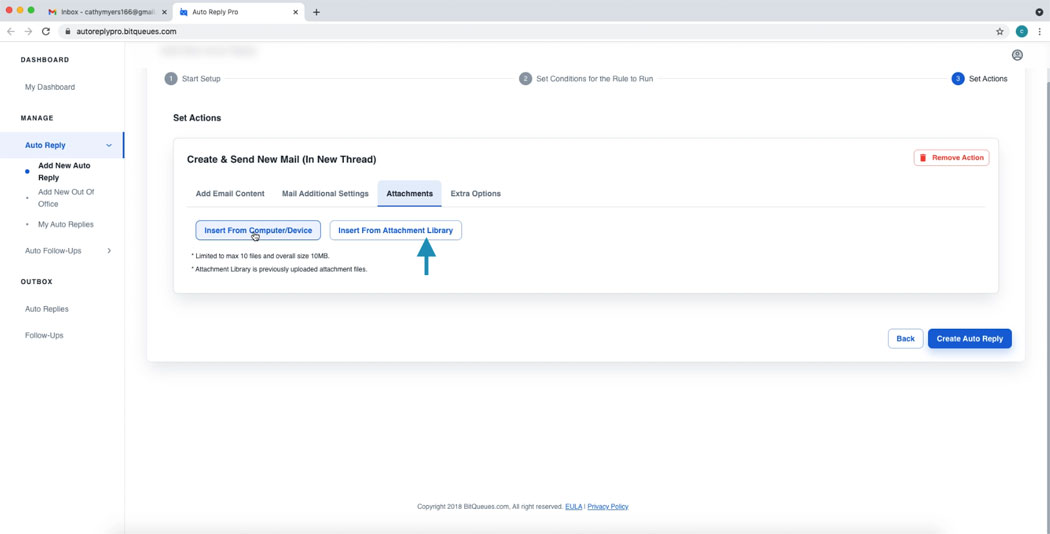
Next Select the file from the list of files from the attachment library and click select. 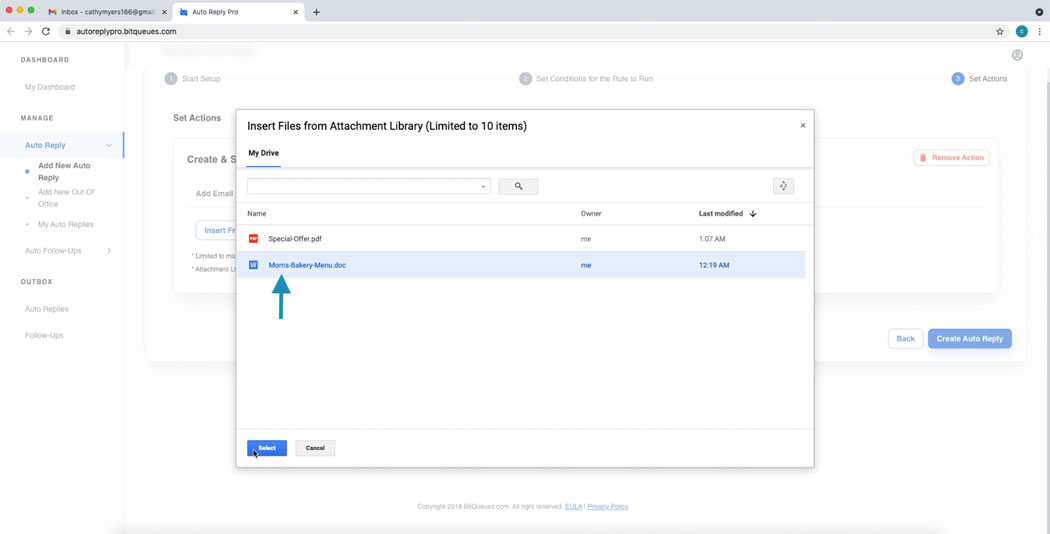
You can now see the file name listed under attachments. If you wish to remove it click the “X” icon on the far right side. Repeat the above steps to attach up to 10 files with combined file size not exceeding 10MB.
You may choose to set some extra options like adding a label to Auto Response emails for easy identification or to organise emails. If you haven’t created any labels yet, you can create in Gmail interface and click Reload labels button to choose from the list.
Click the Create Auto Reply button and we are finished setting up our Auto Response with Attachments for Gmail. Now the rule is listed under My Auto Replies Section. 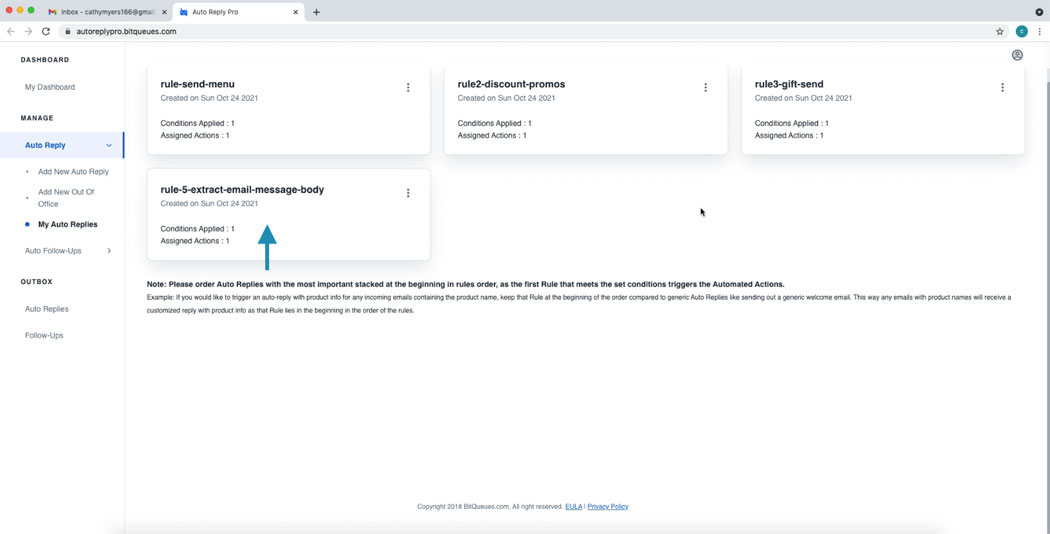
If you are not at the list screen, navigate from the left side bar menu. Please follow the path Auto Reply > My Auto Replies. This should list all the existing Auto Replies you have created.
Click the three dots icon on the right side next to Auto Reply name. You will get Edit, Change Order Priority and Remove options. Please select Change / Order Priority. 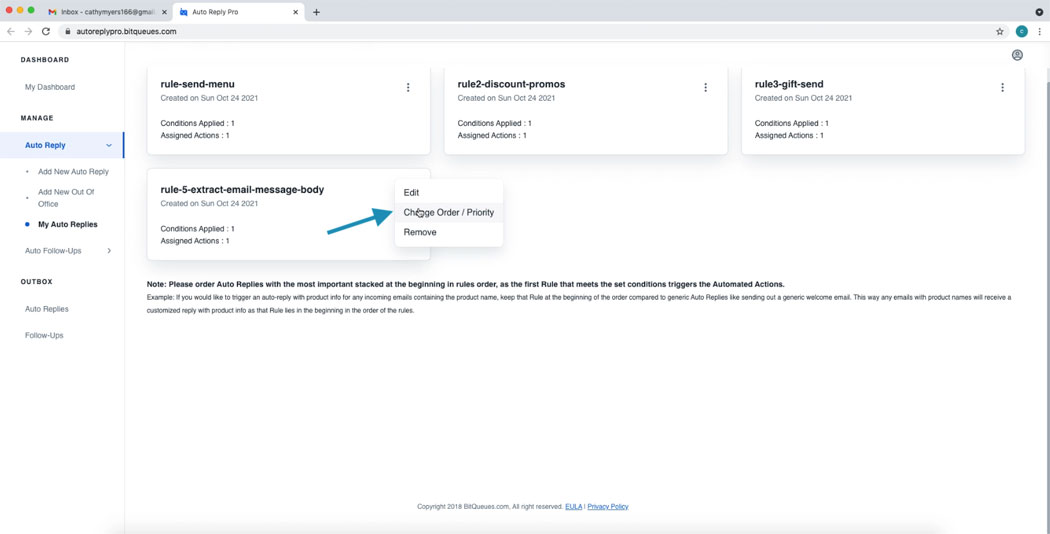
A Pop-up will appear with the list of Auto Reply rules, select the rule before which you would like to move your rule and click the button Move to Position. For this tutorial we are moving our rule at first place in order. All done! the window will refresh and you will see the Auto Reply rules order updated. 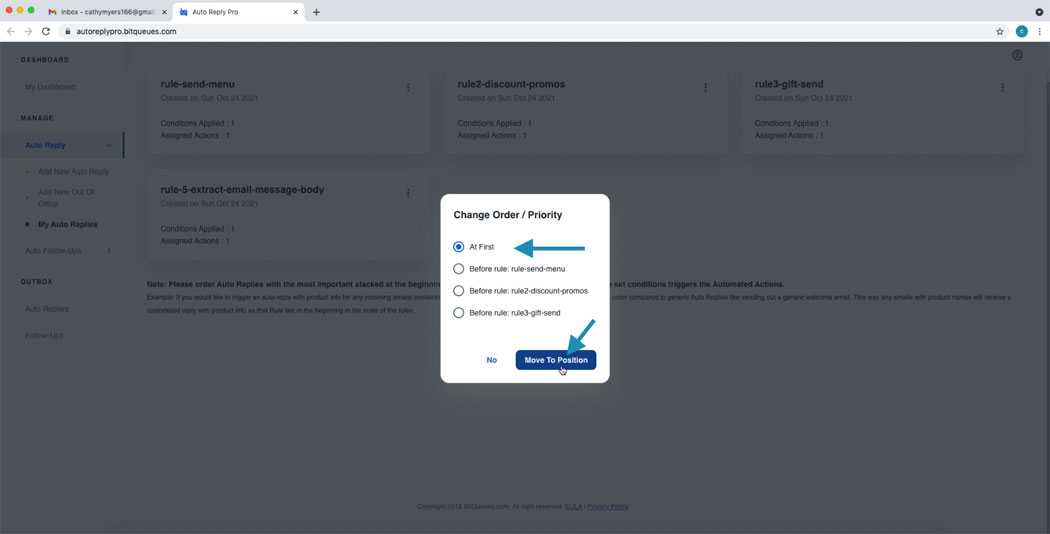
Tip: Please keep more complex scenarios up in the order and more common scenarios in the end. As the rules are executed in preference of sequence.
Auto Reply Pro lets you do more by helping you automate complex workflows. For example if you have a complex condition like email content has words and email is from a specific domain in a rule. Keep that in front of a rule with very generic condition like send auto response if the mail contains a specific word. This will help the Add on to check the conditions in complex to simpler order and increase the chances of sending a very specific and relevant response.
By default Google allows you to send only one auto response per day to incoming emails from one contact. But Auto Reply Pro allows you to send multiple auto responses depending on the conditions set. Not just that you can set the Add-ons with different mail send modes ( Run and Send Auto Reply once for each matching rule per thread or for first matching rule per thread Or every time for all incoming mails per thread). Click here to learn more about Setting Mail Send Modes.
To run a test, we are submitting a form on demo website. The form response will be emailed our test Gmail account. 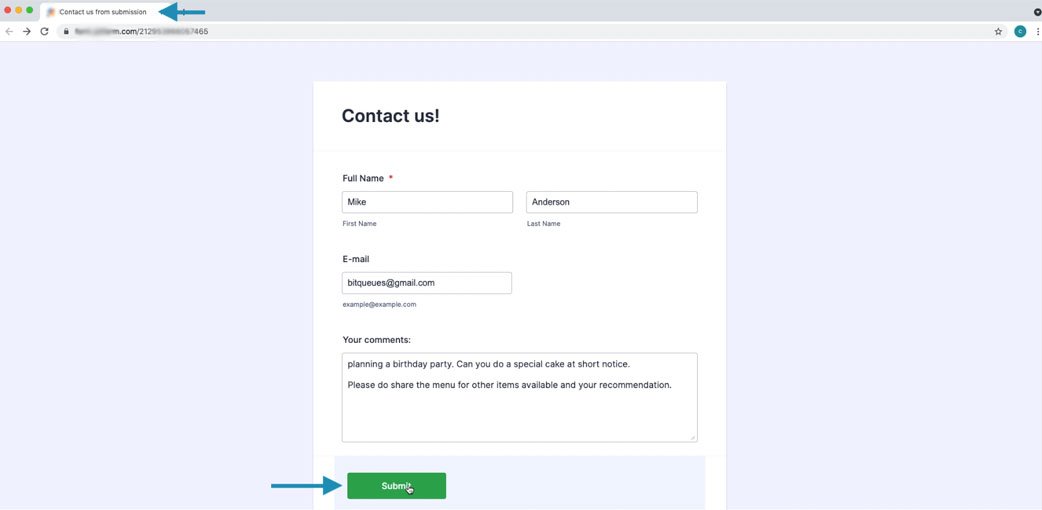
Form submitted. 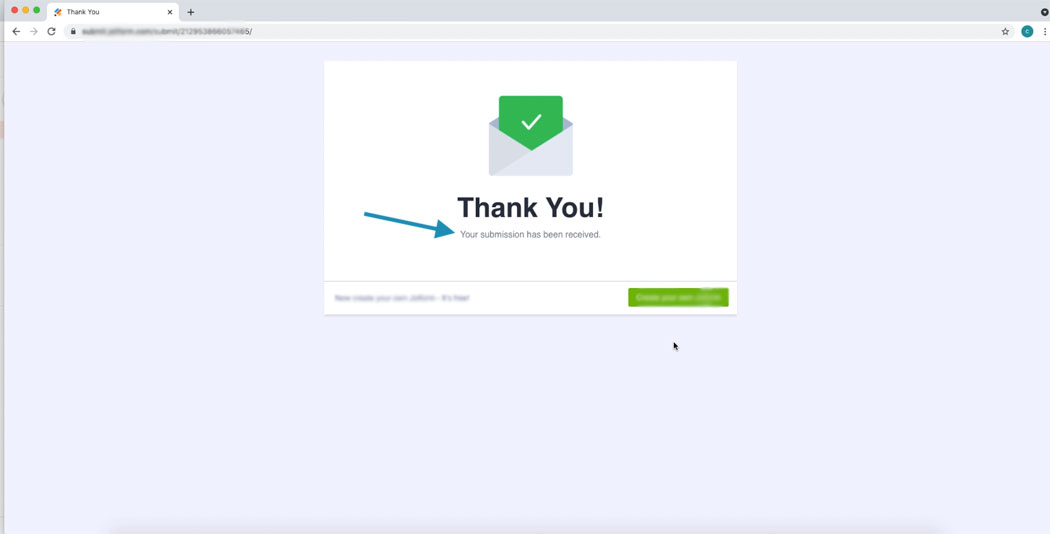
As you must have already noticed in this case the end users email is inside the tabular data we received in the email body. The service also adds the email in reply to field. But some services don’t add it.
In that case our extract email address comes in very handy to send auto responses to the user who submitted the website contact form, rather the service provider as the from email address usually contains email address of service provider. Sending an auto response to service provider would beat the purpose, but that’s not the case any more as you have Auto Reply Pro to the rescue in this use case. 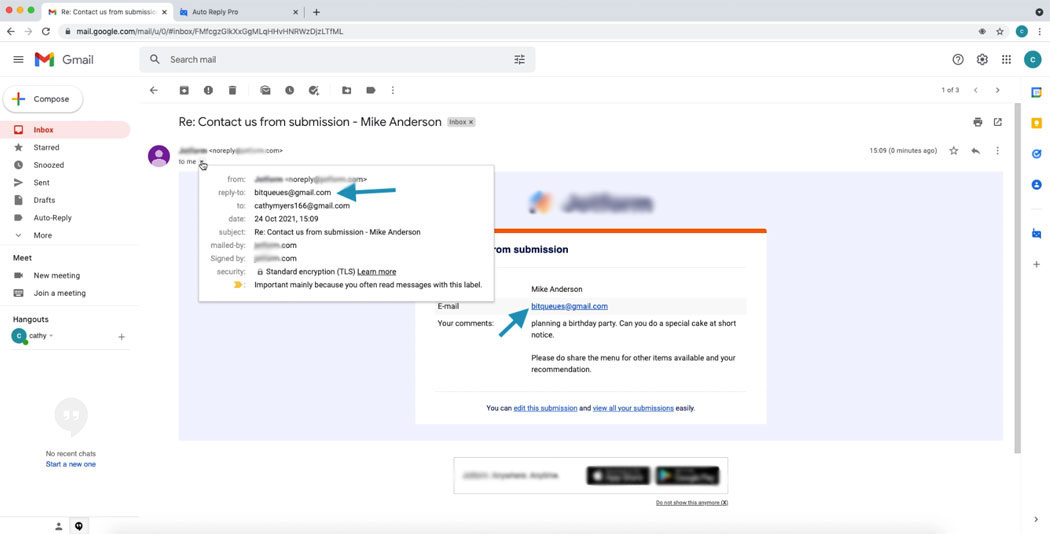
Auto reply is sent to the form submitter in this case by extracting email from the body.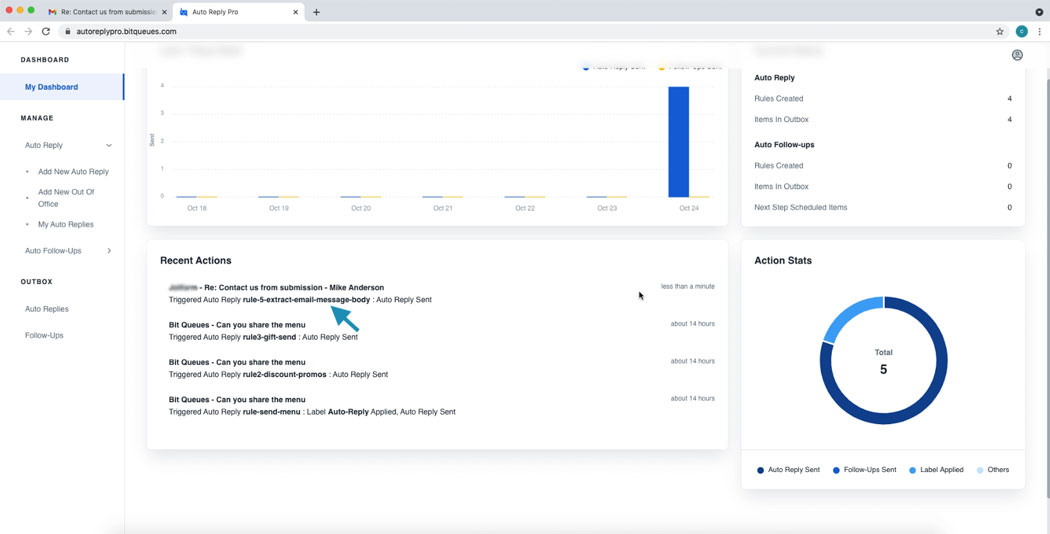
Here is the Auto Response sent to the form submitter as viewed in sent items from Gmail account. 